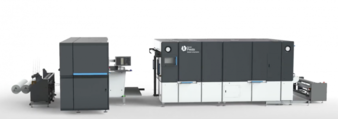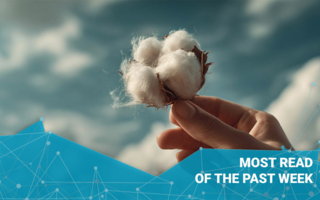15/12/2020 – The major gains in the Microfactory model — auf Deutsch lesen
Kornit’s Microfactory approach
With a reverse business model and reverse supply chain approach, the customer can buy the product and only then is it manufactured.
With a turnover of 162 billion euro and the employment of 1.5 million people, the textile and clothing sector is an important part of the European manufacturing industry.
It is also one that is growing, and is expected to continue to grow, despite the global pandemic.
In fact, eMarketer predicts the pandemic will cause overall spending to increase in retail e-commerce in Western Europe much faster than anticipated. Even while overall retail declines by 9.9 percent in the region, e-commerce sales are estimated to jump by 16.9 percent this year – well up from the pre-pandemic forecast of 8.8 percent.
This buoyant outlook is underpinned by Eurotex figures showing 40 percent of e-shoppers in the EU bought clothes and/or sporting goods online in 2019.
Sustainability is also playing a major part in European growth today. Focus has been renewed through demand for goods that adhere to certain regulations and standards. There is also an increased need to offer local production, close to the consumer, eliminating importation from other continents.
These combined elements create the perfect environment for Kornit’s Microfactory approach with Gerber. Gerber specialises in responsive digital solutions for fashion, home décor, and other textile-related supply chains. It complements Kornit’s digital printing capabilities with pre- and post-production planning, designing, and cutting.
Kornit CMO Omar Kulka:
“While we began taking our first steps towards a Microfactory setup at ITMA 2015, we didn’t start working with Gerber until three years later. This then accelerated our ability to bring customers the perfect solution. The collaboration provides a true inline solution that delivers a highly responsive approach to production. With the Microfactory we can create a product on a scale of one. This turns the normal production model on its head. Instead of manufacturing many items of the same type to reduce costs, we can produce exactly what is required, at the time it is required – highly cost-effective.”
With this reverse business model and reverse supply chain approach, the customer can buy the product and it is then manufactured. The shift is from supply and demand to demand and supply.
The lean and efficient model addresses many of today’s market needs:
on demand production that supports zero inventory
e-commerce and self-expression
sustainable production
short time to market and production that is close to the consumer
It digitalizes processes to fully connect smart factories and supply chains all the way to the end consumer.
It also sets a new norm for the textile industry, whereby the consumers will receive a sustainably-created, high-quality product, tailored and customized to their taste, with a shorter delivery time.
Finally, it provides a complete solution that allows single-step production of a single customized item in the shortest time to market, with no inventory.
Kornit has received a great response with many brands and manufacturers already enjoying the value and options the Microfactory solution delivers to them. Interest has been huge as understanding grows on how the approach can be a highly cost-effective, flexible, and responsive alternative to existing processes.
This ability to re-imagine traditional manufacturing routes has been made possible by the collaboration with Gerber. The synergies between both operations has allowed Kornit to design a solution, housed in Gerber’s Manhattan (US) showroom, that sets a new standard.
Mr. Kulka concludes:
“The sharing of fresh ideas and creative ways of working is something we would like to continue to explore with other partners. We are always looking for new and exciting ways to collaborate.”




